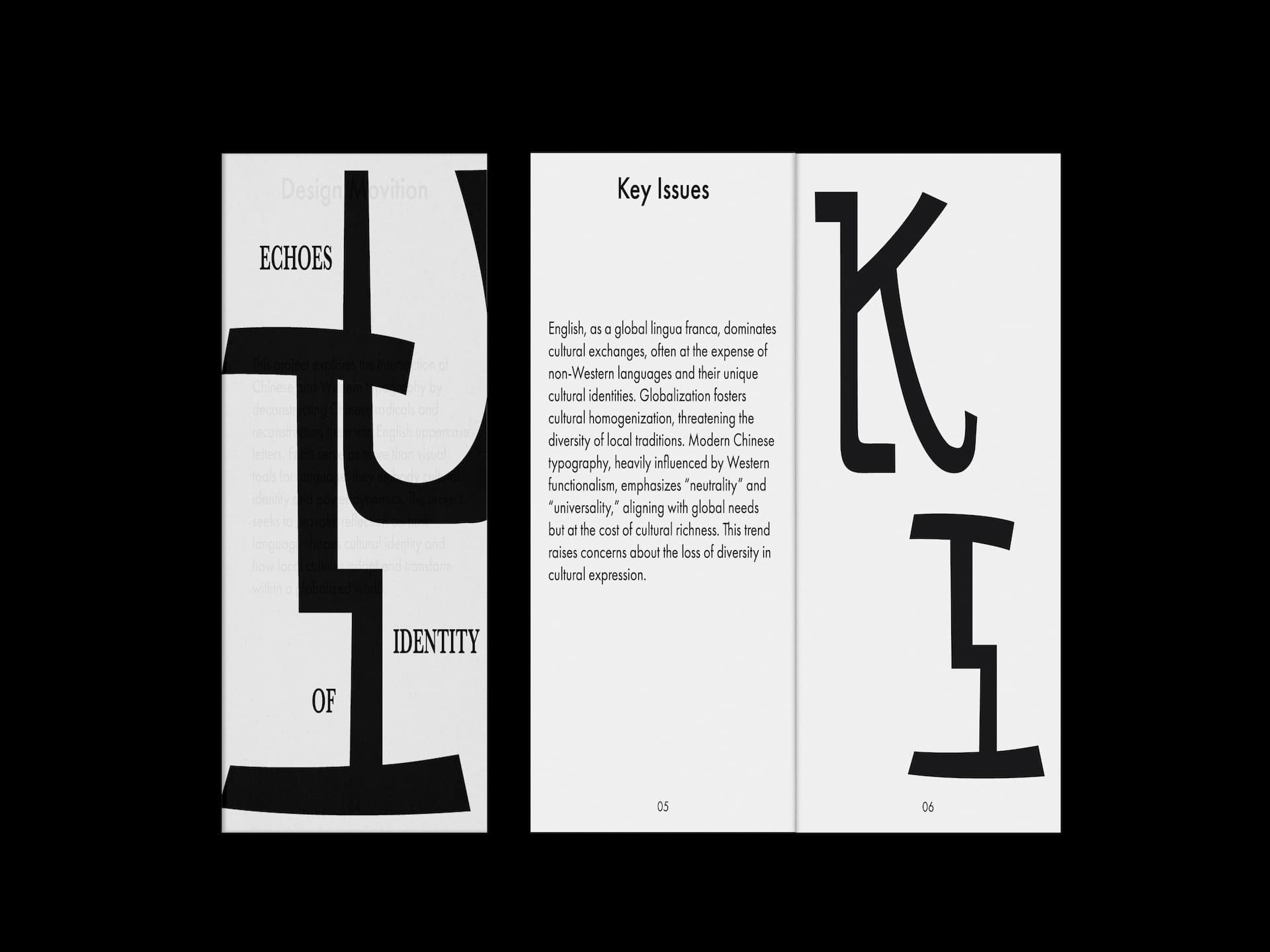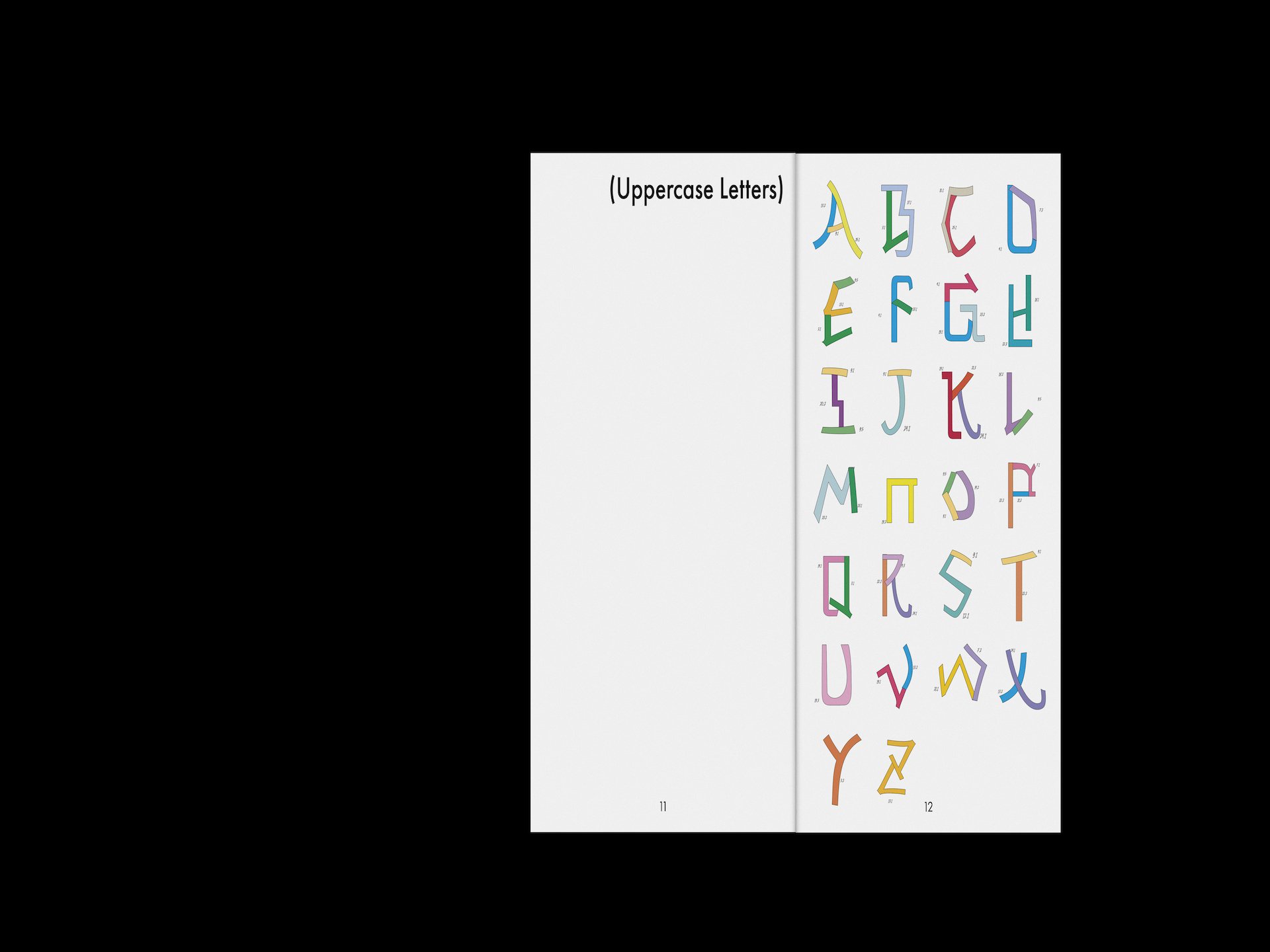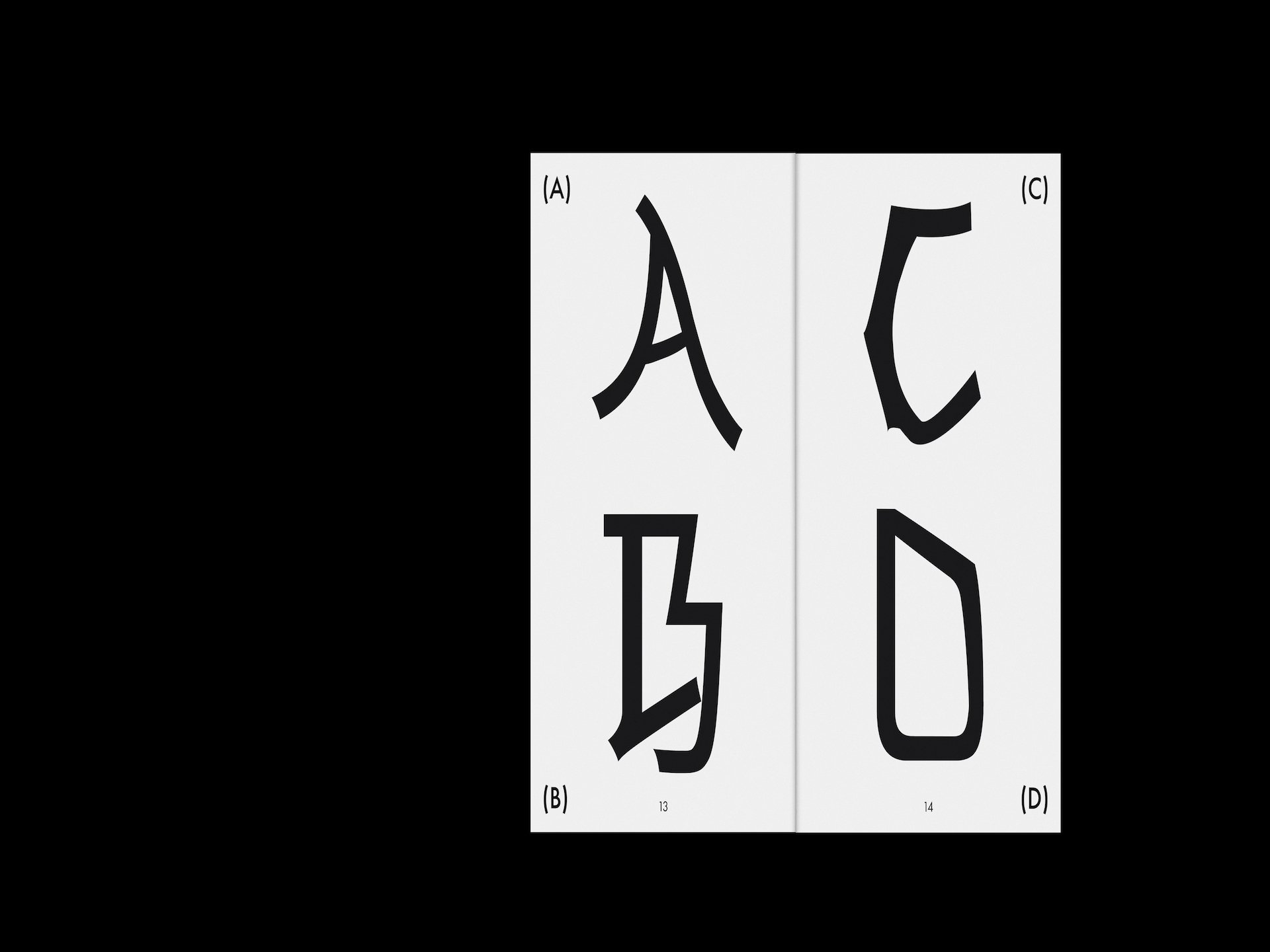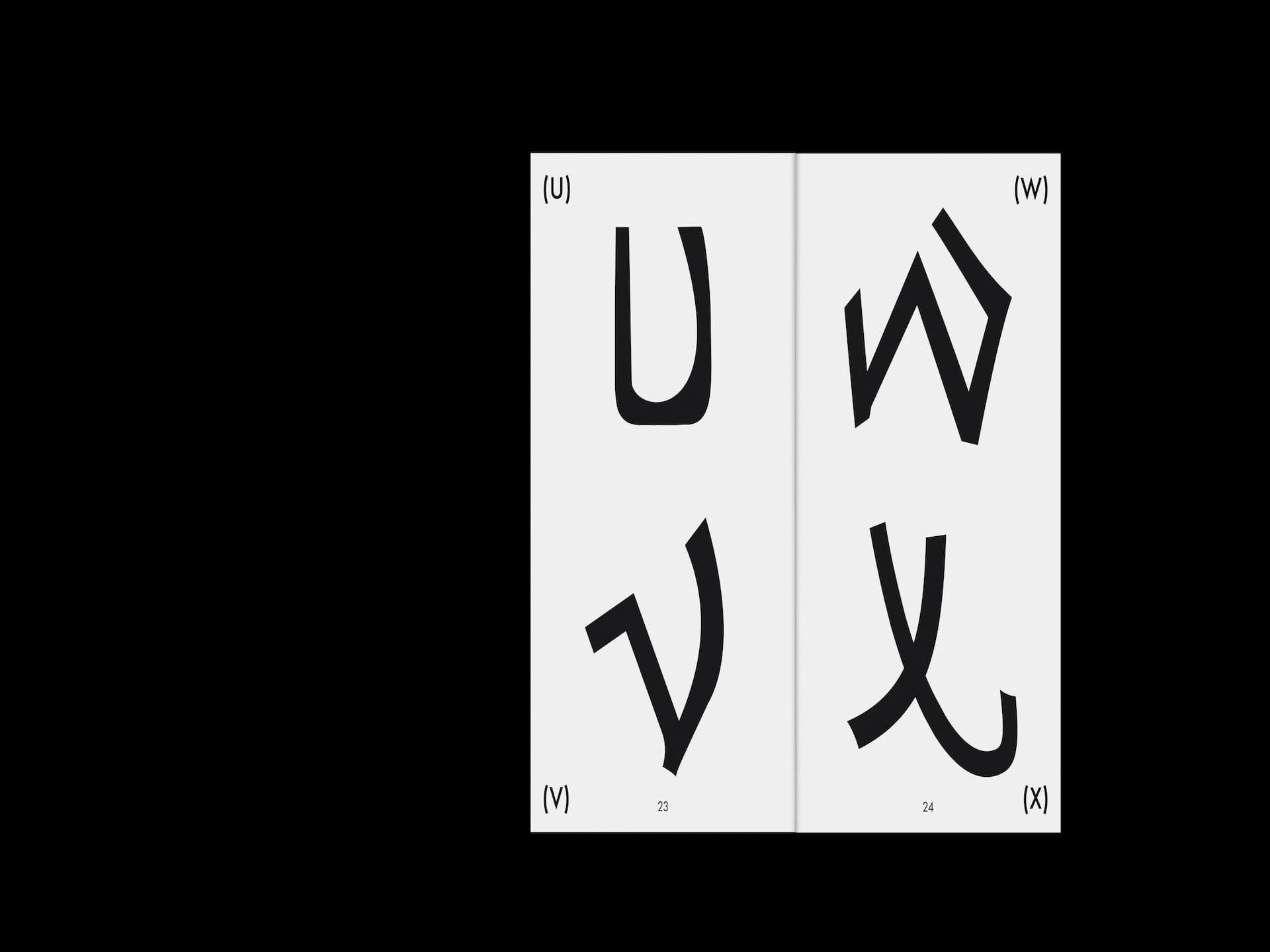Yajie Peng (Irene)
Email address
moc.liamg@316031peijayBiography
Yajie Peng is a graphic designer specialising in editorial design and typography.
Her practice explores how form, structure, and language come together to construct layered, complex narratives. Centred on research and visual composition, her work balances clarity with experimentation. She has a particular interest in print as a tactile and expressive medium, using it as a space to investigate the relationship between visual and material communication.
Her projects often engage with themes of visual storytelling, culture, and personal experience—drawing connections between text and image to reflect on identity, memory, and lived histories.
Portfolio
Stitched Out
Why do so many women’s clothes lack functional pockets? This project begins with a simple, yet overlooked question.
Women’s pockets are never merely about storage. They represent space, autonomy, and action—the right to carry one’s own life.
This project investigates the historical disappearance of functional pockets in women’s clothing, reflecting gendered power, spatial control, and the invisibility of female labour.
Using hand-stitching as both a design method and a form of conceptual resistance, I dismantled pockets from male garments and sewed them onto tight-fitting women’s clothing. These sewn fragments expose the asymmetries of who is given space and whose labour remains unseen.
The project is accompanied by a small book designed to fit into a pocket—both literally and symbolically. It documents fragmented histories, silent labour, material politics, and emotional residue. Within its stitched pockets, viewers can discover physical cards, each carrying invisible stories.
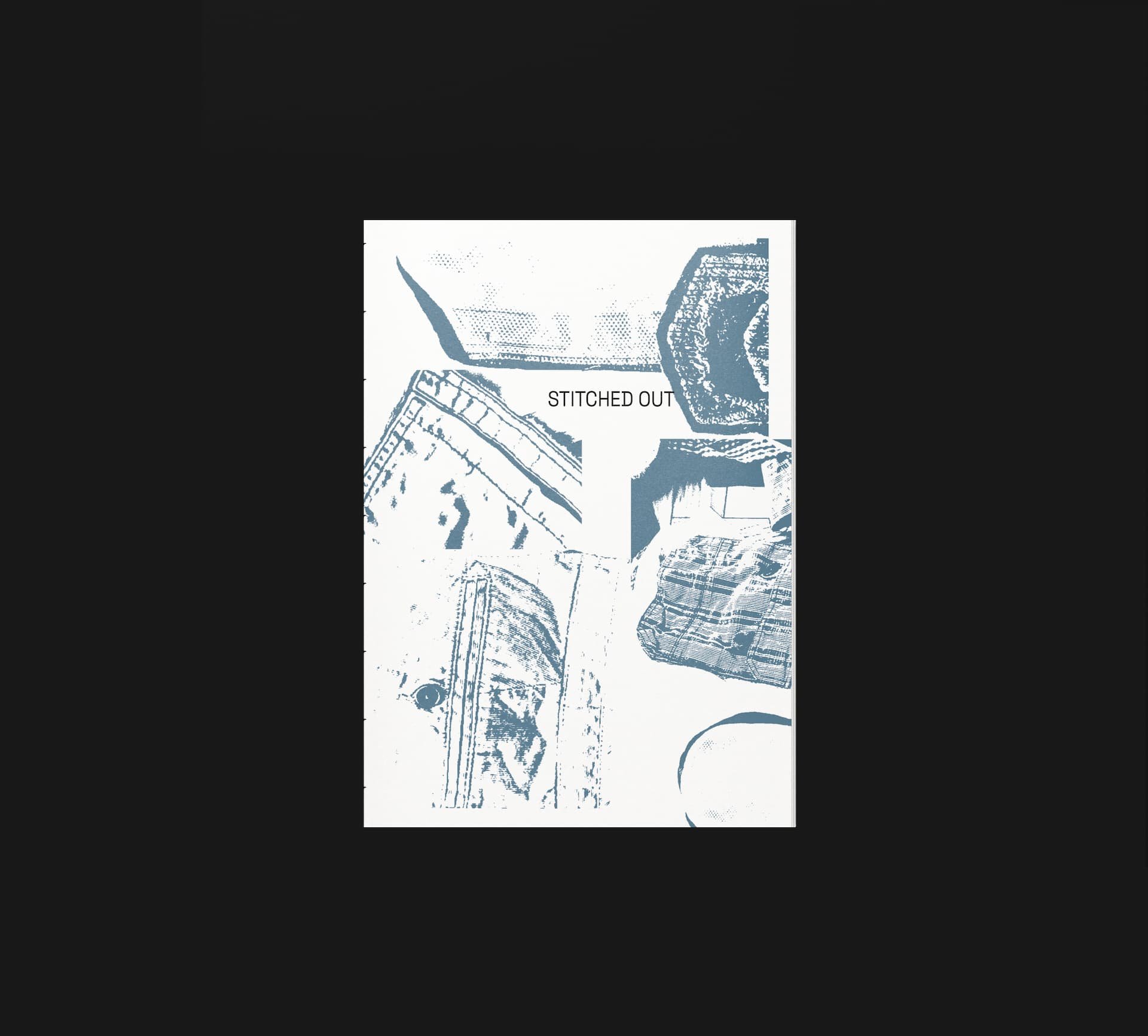
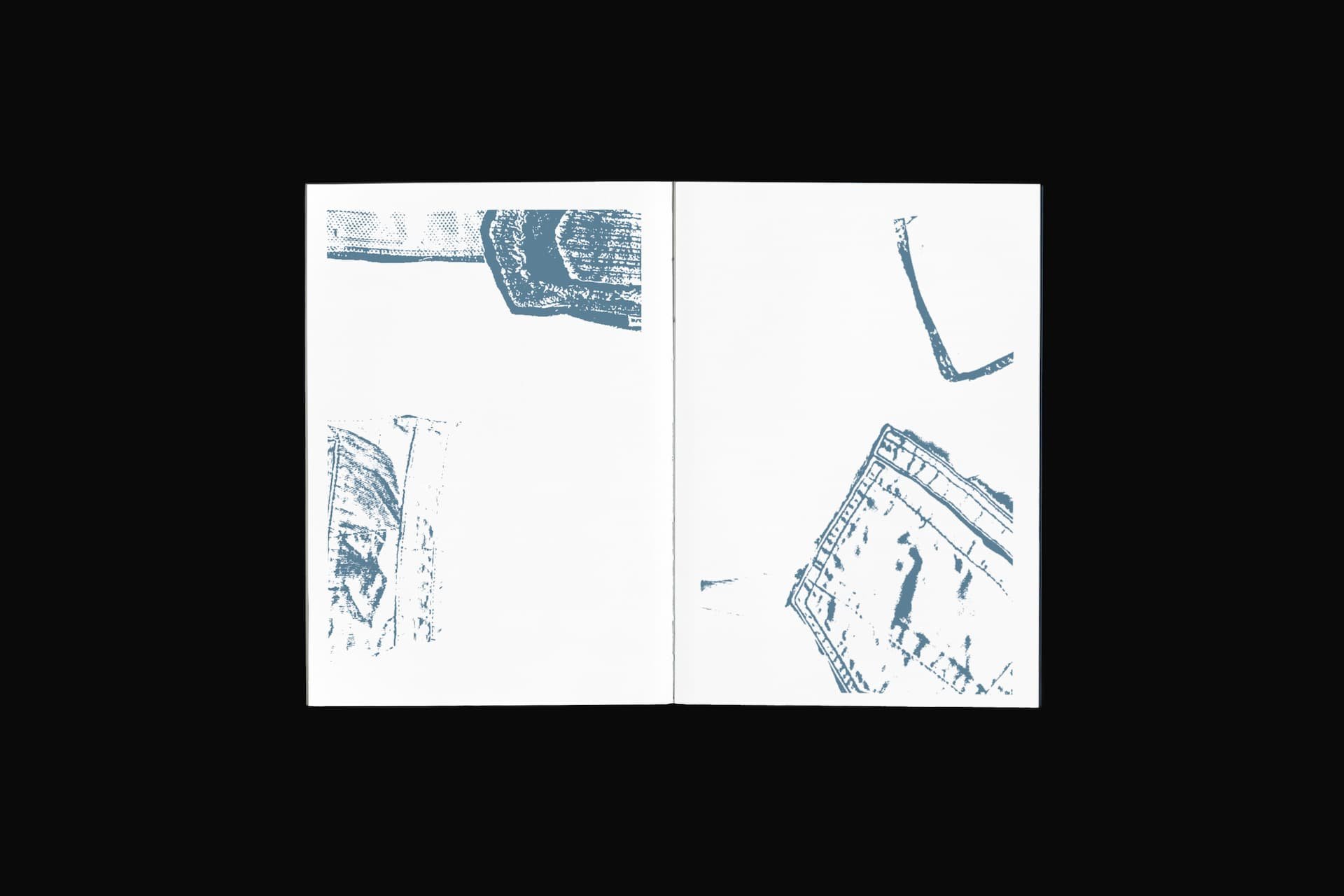
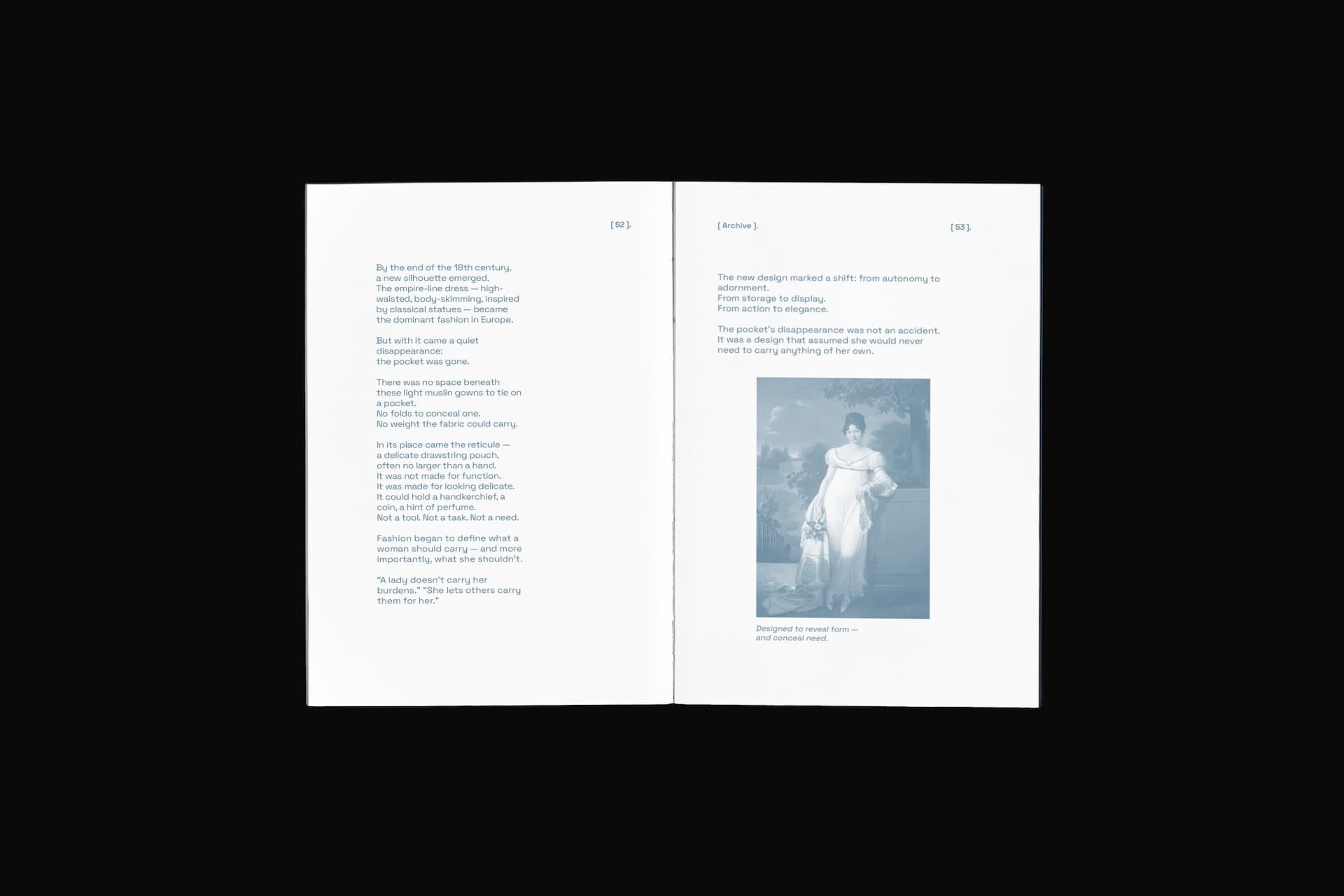
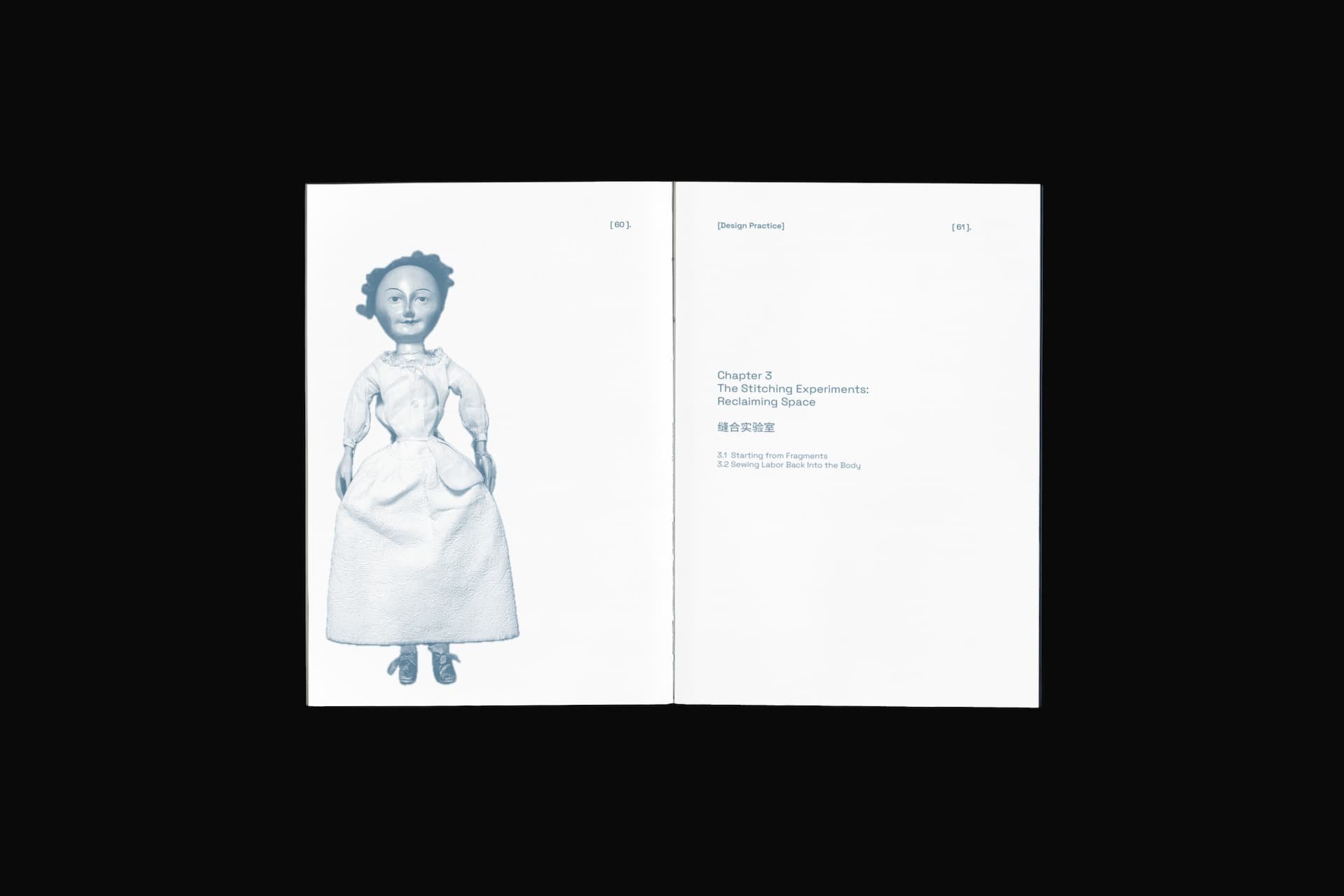
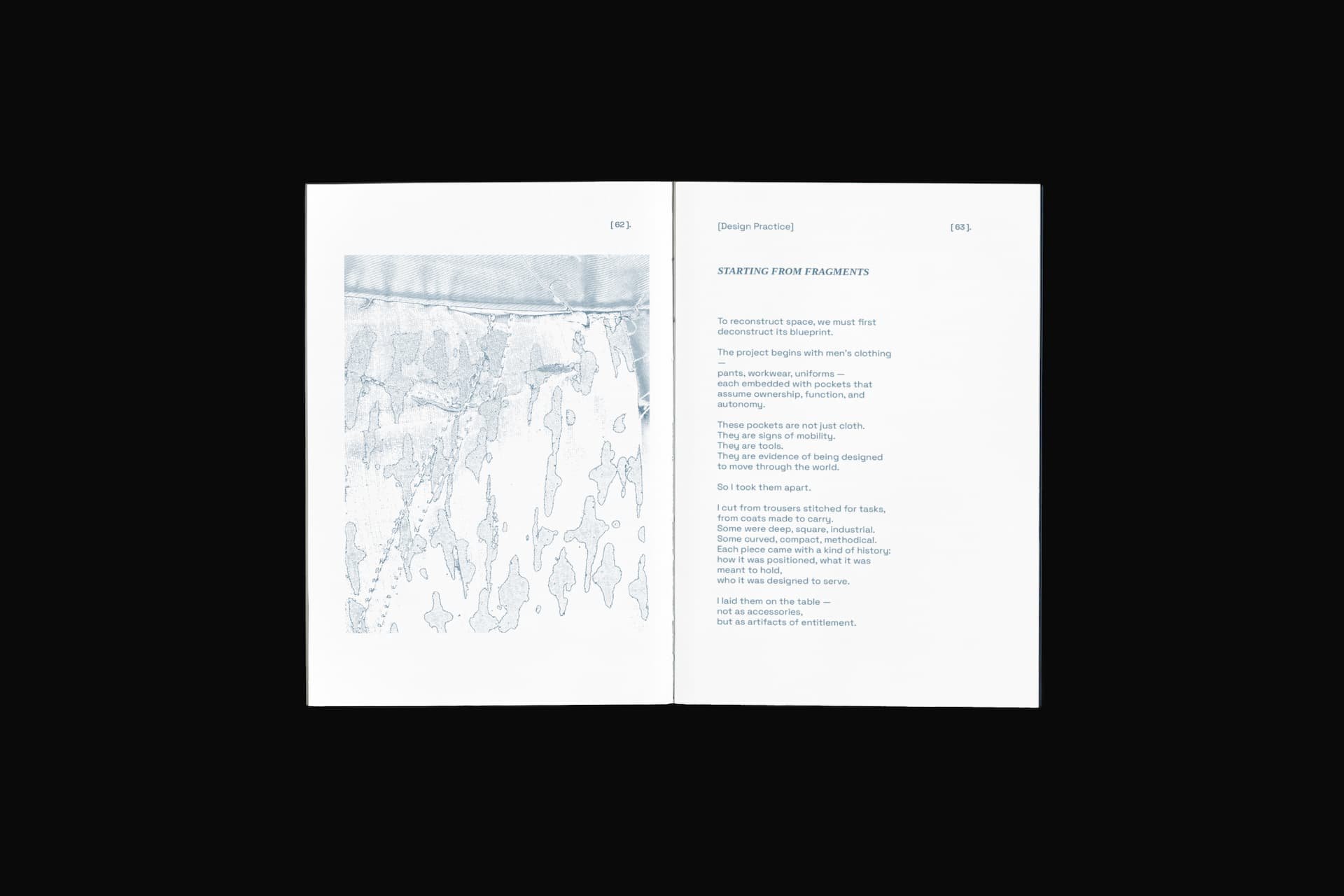
Traces
This project uses the design of a Visual Identity System as a point of departure to explore the conceptual divide between artificial intelligence and human creativity, in response to the exhibition Original Machines (the Design Museum). It proposes that design is not merely a product to be delivered, but a process to be revealed—a non-linear, exploratory journey shaped by trial, error, doubt, and iteration.
As AI technologies increasingly generate images, layouts, and entire brand systems at remarkable speed, the paths, decisions, and residual marks left behind by human designers become valuable artefacts—tangible evidence of creative thinking.
These ‘traces’ of the design process—mood boards, notes, sketches, mind maps, unfinished vector paths, interface screenshots—are typically discarded or hidden in final presentations. This project brings them to the forefront.
By transforming these process fragments into the foundation of a visual language, the project redefines the act of branding itself. It constructs a system built not on perfected outputs, but on the evolving remnants of human design work—restoring visibility to the very labour that AI cannot replicate.
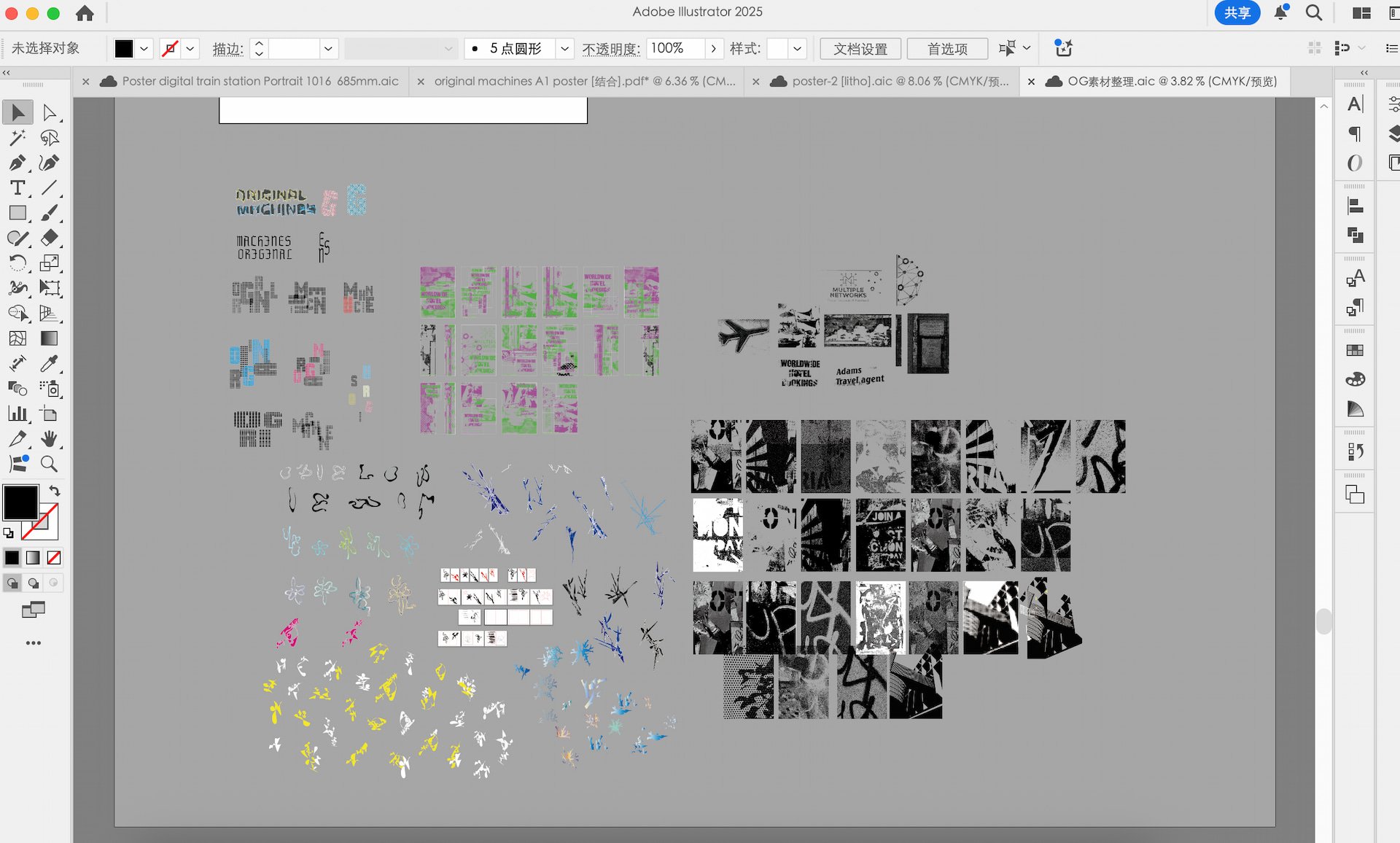
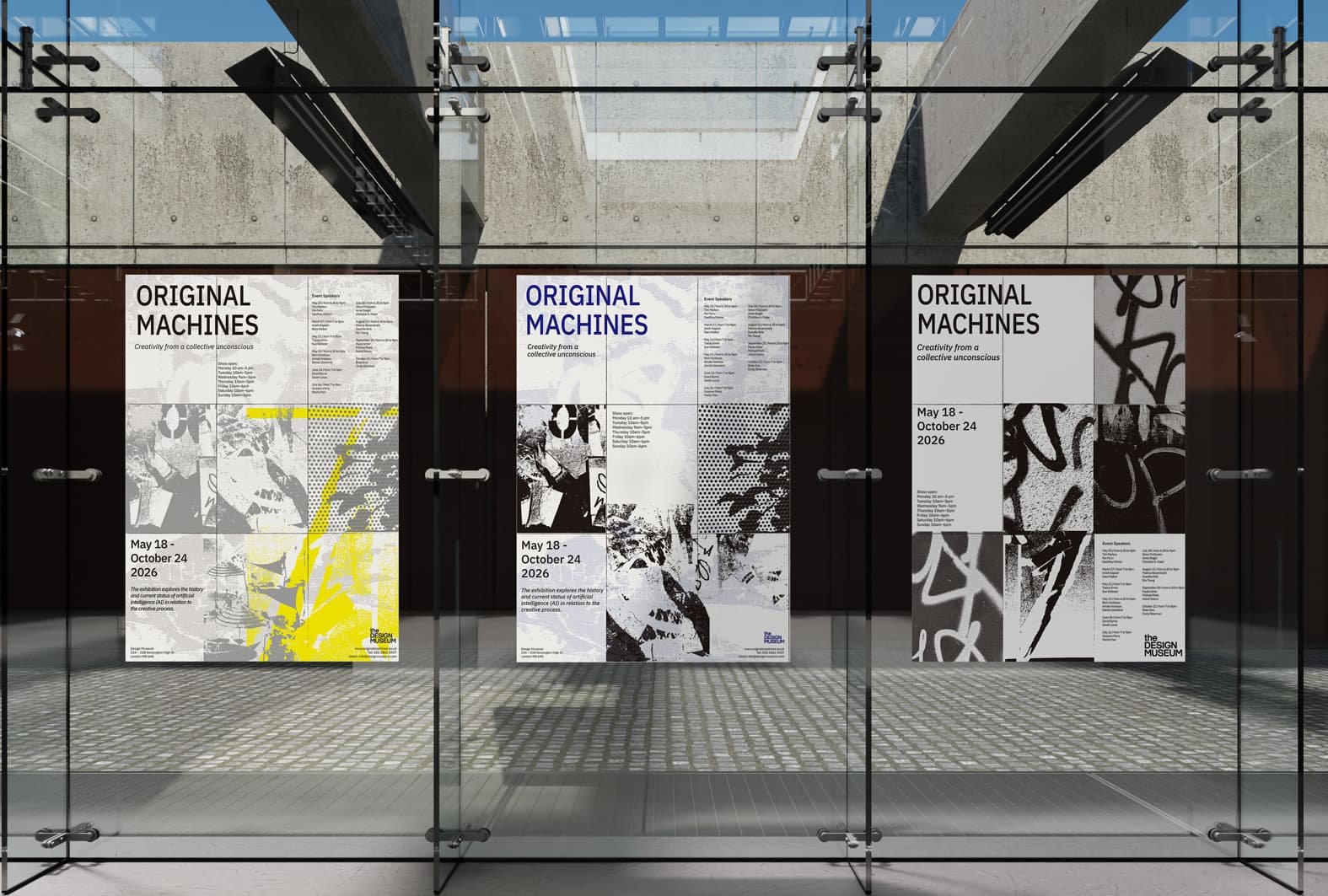
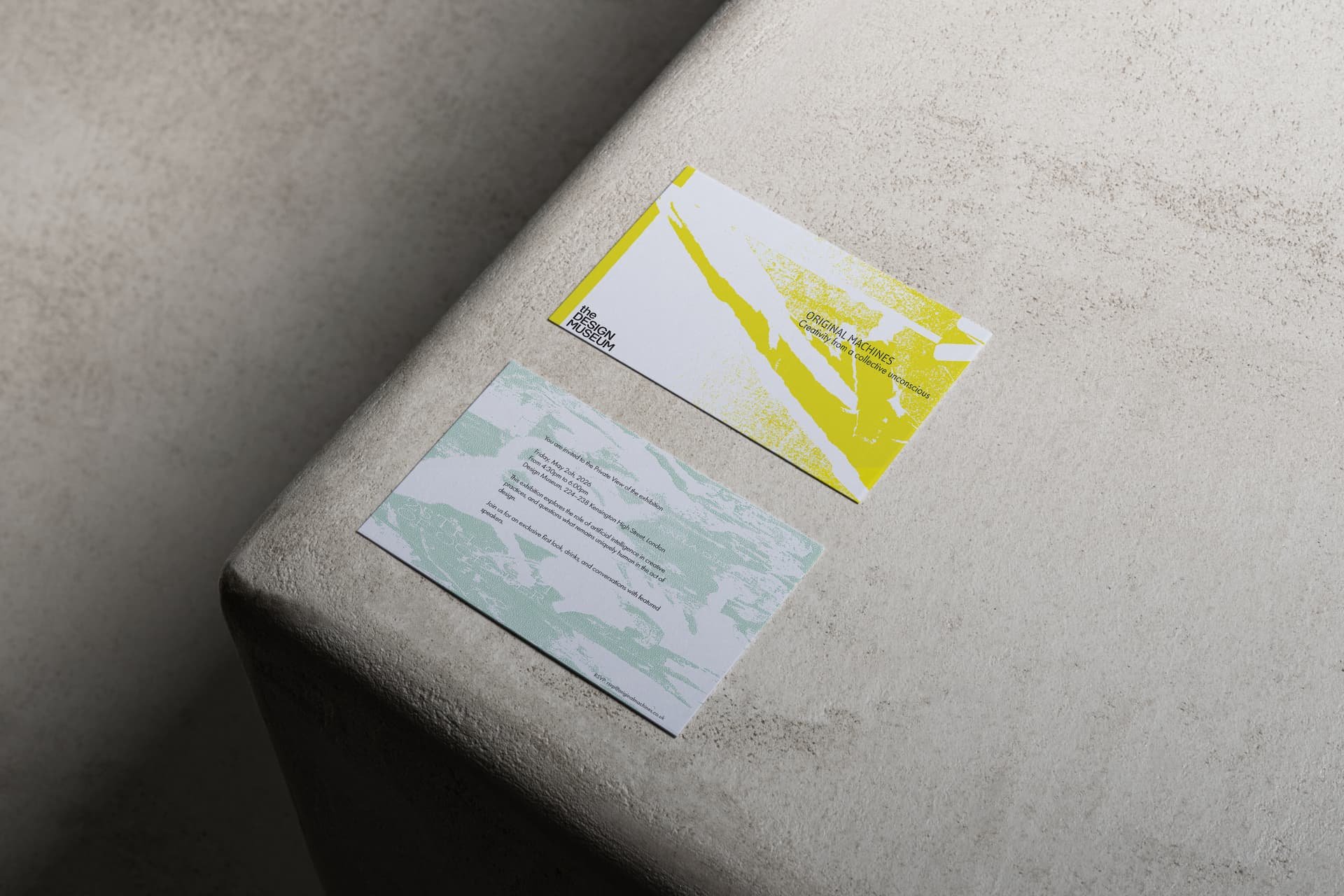
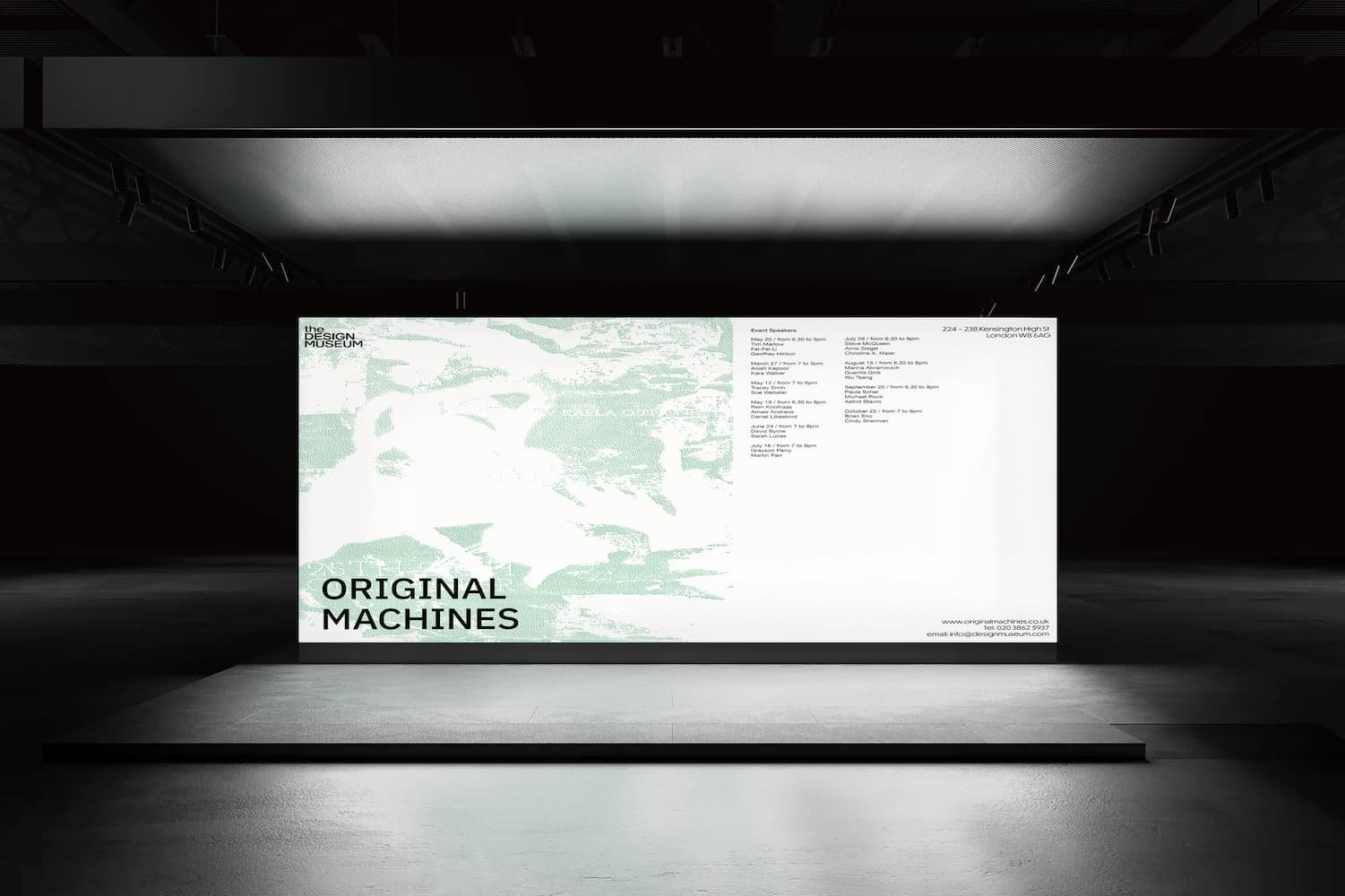
Echoes of Identity
The project starts with the radicals of Chinese characters, the foundational components rich in cultural significance. By deconstructing these radicals and reassembling them into English letters, a novel visual fusion emerges, symbolising the transformation and redefinition of cultural identities within globalisation.
This design challenges the ‘neutralisation’ and ‘universality’ trends in modern typography, questioning their impact on cultural uniqueness. It invites viewers to reflect on the deep connections between language, culture, and power, exploring how local identities can adapt while retaining their distinctiveness amidst global influences.
